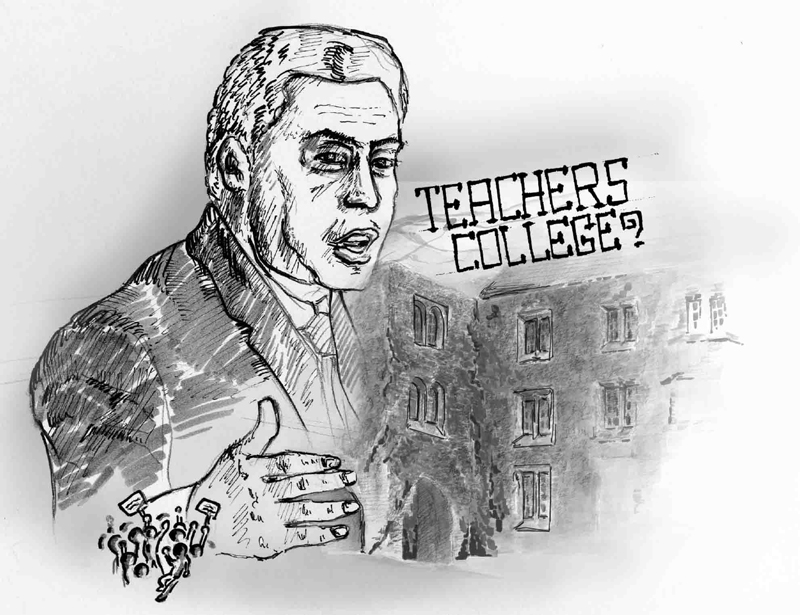Ontario will reduce the number of new teachers’ college graduates in half beginning in September 2015, while also extending the time it takes to graduate from one to two years, the provincial government announced June 5.
As part of the changes, the province announced it would also reduce the per-student funding it provides by about 20 per cent.
The governing Liberals, backed by the Ontario College of Teachers (OCT) said the changes would help new teachers find jobs and give them more practical training, doubling the amount of time they must complete in classroom placements from 40 to 80 days.
The changes are aimed to eliminate the growing excess of new teachers’ college graduates who cannot find work in Ontario.
In 2012, the unemployment rate of teachers in their first year since certification was 37 per cent, up seven per cent from 2011, according to the OCT. In 2006, the rate was just three per cent.
There were over 10,000 newly certified teachers in 2012, about 8,000 of whom graduated from Ontario teachers’ colleges, OCT spokesperson Stephanie McLean said.
But just 6,000 new teachers per year are actually needed, according to a Ministry of Education press release.
“The most significant factors for consideration are the large number of teachers living in Ontario without jobs in teaching and the number of teachers needed by our publicly funded school boards,” said Gyula Kovacs, a spokesperson for the Ministry of Training, Colleges and Universities.
“The teacher surplus is so large that it will require some time to clear,” he added.
Alastair Summerlee, chair of the Council of Ontario Universities (COU) and president of the University of Guelph said the council opposed the move, estimating the government would be providing one-third less funding for the same number of students.
It “will diminish—not enhance—the experience for students in our teacher education programs,” Summerlee said.
COU president and CEO Bonnie Patterson said the smallest teachable programs would get hit hardest because they are the most expensive for universities.
Patterson called the changes to funding a “total surprise,” adding that it’s an “unprecedented” decision by the government.
Ontario Undergraduate Student Alliance president Amir Eftekarpour said the move would limit the options of prospective students due to the extra year of tuition.
“The labour market trends of today are not necessarily going to be the same by the time a student completes their degree,” Eftekarpour said.
But Kovacs said the extra year of tuition can be mitigated for students by applying for a broad range of OSAP loans, grants and bursaries for both years of the program.
Brandon Grigg, a recent graduate of teachers’ college at Western University, said the benefit of the changes would be the additional practical experience.
“The more in-class experience a teacher can get, the better,” Grigg said
But Grigg noted he was happy to have completed teachers’ college prior to the changes.
Under the new system, if smaller teachable programs were cut, he said he might not have been able to enroll in an uncommon program such as geography, a subject for which he has a passion.
“I would look at going to Australia, to another province, to another country,” Grigg said.
“I don’t think I would go to teachers’ college [in Ontario] if it was two years.”






